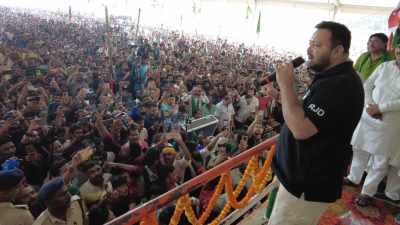A place in the mind called My Lai
News of the My Lai massacre did not break until November 1969. US Army investigation of the incident had begun in September 1968. Lieutena...

News of the My Lai massacre did not break until November 1969. US Army investigation of the incident had begun in September 1968. Lieutenant William Calley was court-martialled for the murder of 109 Vietnamese civilians.
WEST, a squad leader in a platoon commanded by Lieutenant Jeffrey La Cross, followed Calley’s platoon into My Lai. `Everyone was shooting,’ he said. `Some of the huts were torched. Some of the yanigans (young soldiers) were shooting kids.’ In the confusion, he claims, it was hard to tell `mama-sans from papa-sans’, since both wore black pyjamas and conical hats. He and his squad helped round up the women and children. When one of his men protested that `I can’t shoot these people’, West told him to turn a group over to Captain Medina. On the way out of the village, West recalls seeing a ditch filled with dead and dying civilians. His platoon also passed a crying Vietnamese boy, wounded in both a leg and an arm. West heard a GI ask, `What about him?’ Then he heard a shot and the boy fell…
Another soldier in the group following Calley’s was SP4 Varnado Simpson, 22. `Everyone who went into the village had in mind to kill,’ he says. `We had lost a lot of buddies and it was a VC stronghold. We considered them either VC or helping the VC’. His platoon approached from the left flank. `As I came up on the village there was a woman, a man and a child running away from it towards some huts. So I told them in their language to stop, and they didn’t, and I had orders to shoot them down and I did this…’
A detailed account came from Paul David Meadlo, 22, a member of Calley’s platoon … Meadlo says his group ran through My Lai, herding men, women, children and babies into the centre of the village `like a little island.’`Lieutenant Calley came over and said, “You know what to do with them, don’t you?” And I said, “Yes”. And he left and came back about ten minutes later, and said, “How come you ain’t killed them yet?” And I told him that I didn’t think he wanted us to kill them, that he just wanted us to guard them. he said, “No, I want them dead.” So he started shooting them. And he told me to start shooting. I poured about four clips (68 shots) into them. I might have killed ten or fifteen of them…
According to SP5 Jay Roberts, the rampaging GIs were not interested solely in killing, although that seemed foremost in their minds. Roberts told Life, `Just outside the village there was this big pile of bodies. This really tiny kid he had only a shirt on, nothing else he came over to the pole and held the hand of one of the dead. One of the GIs behind me dropped into a kneeling position thirty metres from this kid and killed him with a single shot.’ Roberts also watched while troops accosted a group of women, including a teenage girl. The girl was about 13, wearing black pyjamas: `A GI grabbed the girl and with the help of others started stripping her,’ Roberts related. `Let’s see what she’s made of,’ a soldier said. `VC boom-boom’ another said, telling the girl that she was a whore for the Vietcong. `I’m horny,’ said a third. As they were stripping the girl, with bodies and burning huts all around them, the girl’s mother tried to help her, scratching and clawing at the soldiers.
Continued Roberts: `Another Vietnamese woman, afraid for her own safety, tried to stop the woman from objecting. One soldier kicked the mother, and another slapped her up a bit. Haeberle (the photographer) jumped in to take a picture of the group of women. The picture shows the thirteen-year-old girl hiding behind her mother, trying to button the top of her pyjamas. When they noticed Ron, they left off and turned away as if everything was normal.
Then a soldier asked, “Well, what’ll we do with ’em?” “Kill’em,” another answered. I heard an M 60 go off, a light machine-gun, and when we turned all of them and the kids with them were dead.’
A `Time’ magazine report, excerpted from `The Faber Book of Reportage’, edited by John Carey





- 01
- 02
- 03
- 04
- 05


























